In previous camouflage comparisons I have focused mainly on the newest and/or dominant patterns available and those in use by “western” militaries. At the same time I was restricted to what was at hand. As you know, I got my hands on quite a lot of camouflage patterns in the previous months so I am able to give you yet another interesting comparison.
Before I will focus on various temperate and woodland patterns in a forthcoming review, I want to take a closer look at two patterns that were well known before the whole camouflage madness started. You could say today’s comparison is one of “west versus east”.
US M81 Woodland versus PL Woodland
US M81 Woodland is well known, since it found wide usage all over the world by various armies during the last 30+ years. Being a modified version of the Vietnam era ERDL camouflage (2nd Gen), one could say it is among the most iconic camouflage patterns.
It incorporates the same shapes of the ERDL design, but was 60% enlarged. The pattern therefore consists only of macro elements in green, tan, brown and black colors.
PL Woodland (The designation Helikon-tex uses) is based on the polish wz93 Pantera pattern, which was introduced to the Polish armed forces around 1993 and still sees wide use.
It consists mainly of midi elements and appears more muted in comparison to other more high contrast patterns. It is a 4 color design with light green, green, brown and black.
I think the history of both patterns is known well enough, so I won’t go into details. There are plenty of good resources out there in the web.
Methods and approach
As always I do not claim any scientific standard with my camouflage comparisons. I conduct them with my best knowledge and the available resources.
The pictures were taken at the same location I always use to make my close quarter comparisons. That way you can compare the various field tests I have done so far with each other..
Before I start I want to point out the following – like always
I did not edit the pictures in any special way, except the following:
- Lens correction
- Water mark
- Blurred my face out if necessary
- .jpeg compression to make it web compliant
A short explanation to the environment and the procedure
Both patterns were tested in a typical European mixed forest with a high foliage canopy and some basic bushes and little trees on the ground. The pictures portray three different positions:
- Standing in the open (to get an idea of the pattern in this surrounding and if the colors match it).
- Kneeling behind some basic undergrowth (to mimic basic concealment).
- The prone position (to mimic basic up to ideal concealment without using vegetational enhancements).
The first position (standing up) is photographed at 35mm to show the pattern. The other two examples were done with a wide angle lens at first, and then with a 35mm zoom that mimics the actual picture the human eye would perceive at this distance. So in the end I came up with 5 pictures of each pattern.
Position 1 – standing up,
Wide angle shot
Starting with M81 Woodland, you can perfectly see that the color range of the pattern was selected for this kind of environment. The green and brown colors perfectly match the colors of the forest.
Since the pattern basically only consists of macro elements, it has a very sharp contrast because of the color changes, causing a radical disruption of the user on the one hand.
On the other hand there is not as much disruption of the silhouette as you will find with other patterns which use midi and micro elements additionally. Nevertheless this is as close as it gets and we will see how the pattern works at longer distances.
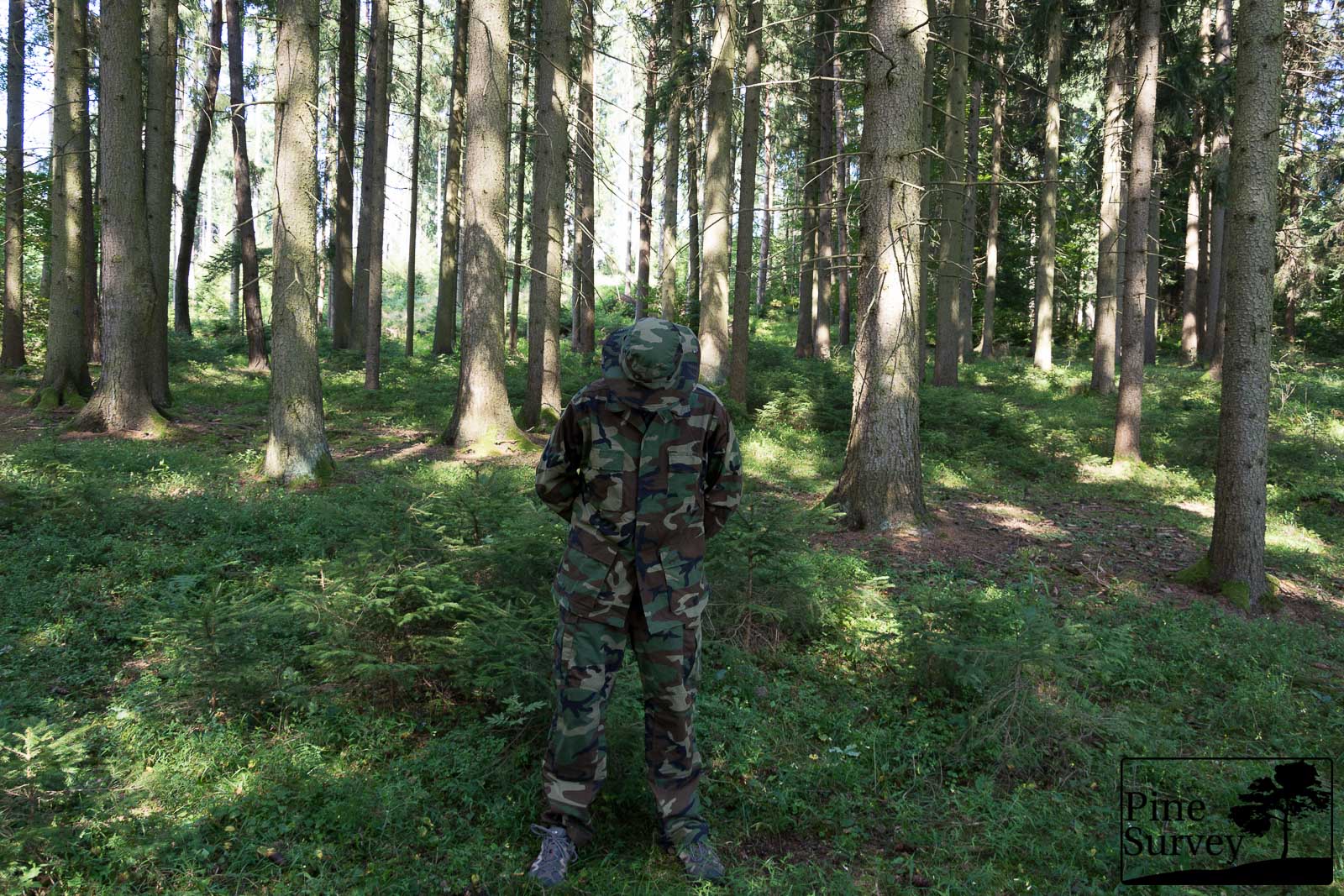
M81 Woodland
Another thing worth mentioning is the repetition of the pattern elements. M81 has a shorter repetition pattern, being therefore much more homogenous when worked into a uniform. As you can see from the picture the pattern does not get disrupted by pants, shirt or boonie. The boonie actually looks as if it is part of the shirt in this situation.
This is one advantage of camouflage patterns with a short repetition cycle. I had many situations with uniforms which seemed to be made of two different patterns since the patterns and especially their colors were so diverse in their repetition.
The black elements of M81 are not as disturbing as I might have thought. In my personal opinion I am rather sceptic about the color black in camouflage patterns. But as I said… that is a personal observation.
PL Woodland is much more muted when it comes to the colors and contrasts of the pattern, in comparison to M81. The colors themselve do not match the forest as M81 does in this particular situation. I have to try out this pattern in a deciduous forest as soon as I have the possibility.
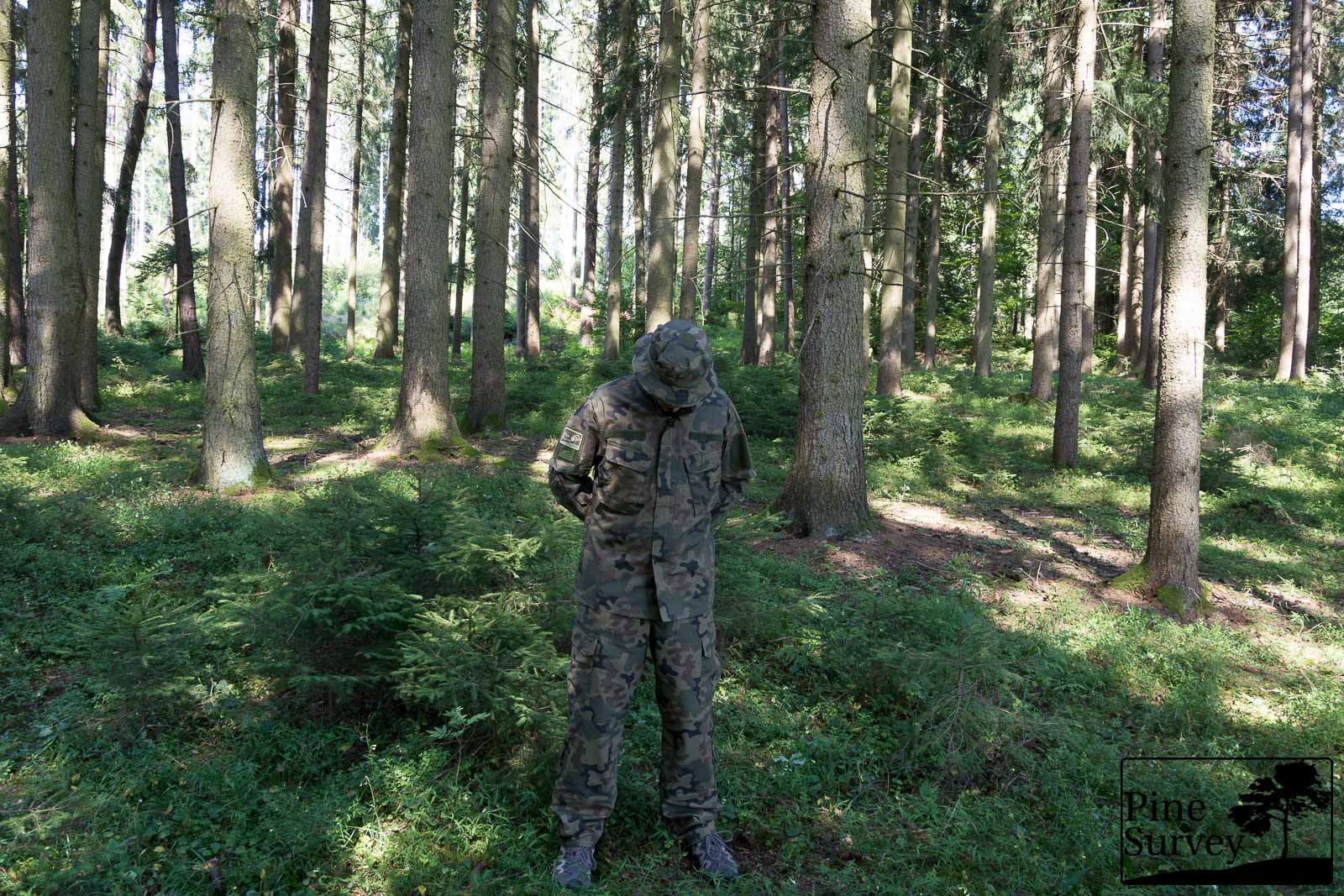
PL Woodland aka WZ93 Pantera
The repetition cycle of this pattern is very short and homogeneous as well, causing the same effect as M81 in matching all parts of the uniform.
All in all it appears to be more greyish, having a color tone that goes into foliage. In direct comparison to M81, standing up at close quarters, it stands out more. But as I said before – this two pictures are only here to give you an idea of the pattern. Next on, we will see how they work in other situations.
Position 2 – kneeling behind undergrowth
Wide angle shot
Starting with M81 again, you can see in the wide angle shot that in combination with basic undergrowth concealment the pattern is quite effective in the Central European mixed forest. The only thing that stands out is the skin from my neck that catches immediate attention. Other than that the color mix would blend in perfectly. You can verify that yourself by deliberately blurrying your eye vision.
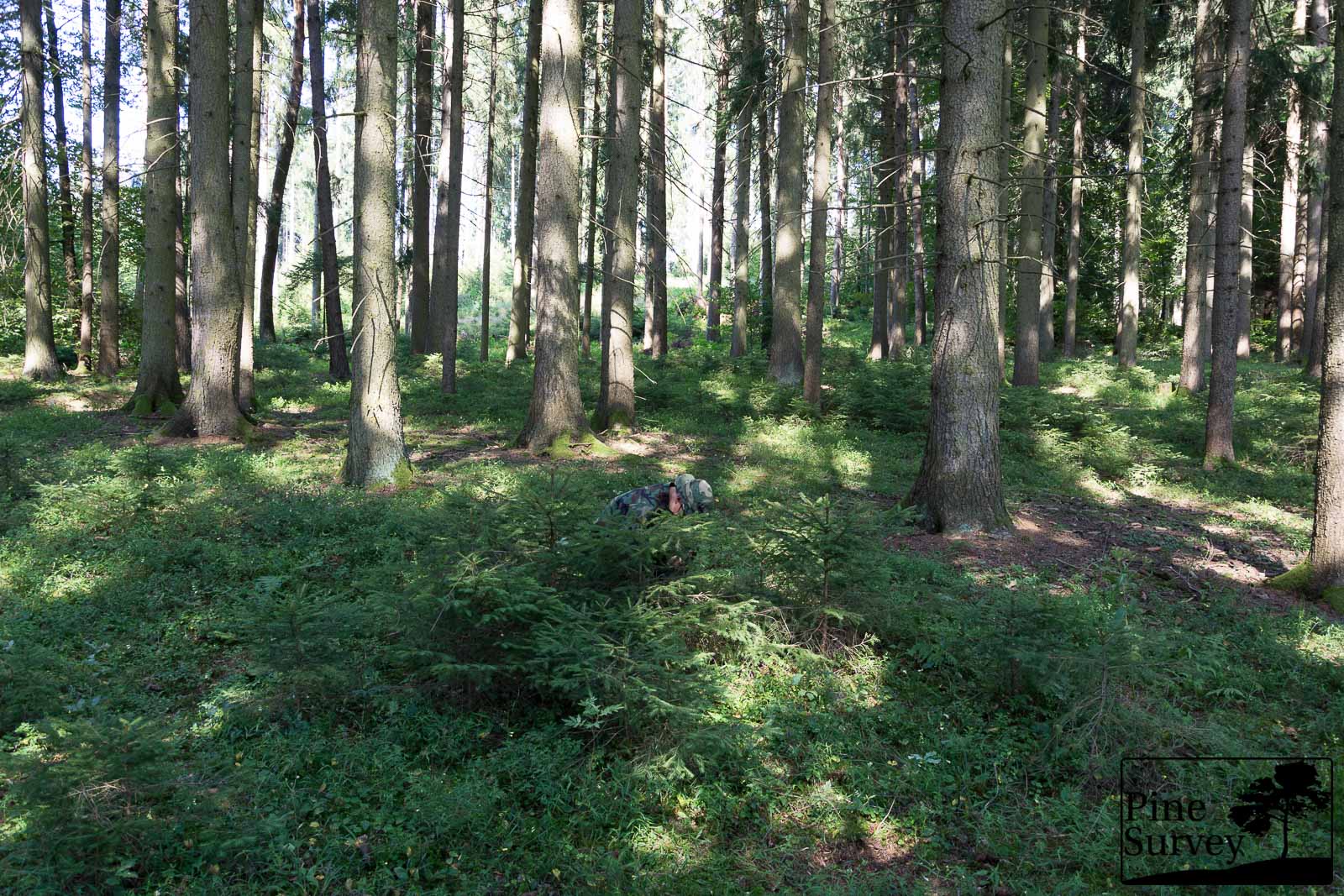
M81 Woodland in the kneeling position – wide angle
The same thing can be said about PL Woodland. Even though the colors are not as good matched as the ones of M81, it is still performing very good since the midi elements break up the silhouette very effectively. Since my neck is covered better in this picture it doesn’t stand out as much as well.

PL Woodland in the kneeling position – wide angle
Zoomed in shot – actual distance of 10m
Zooming in with the 35mm focal length to mimic the human vision, the situation changes. M81 Woodland shows its macro elements rather well while still having an ideal color match in this particular surroundings.
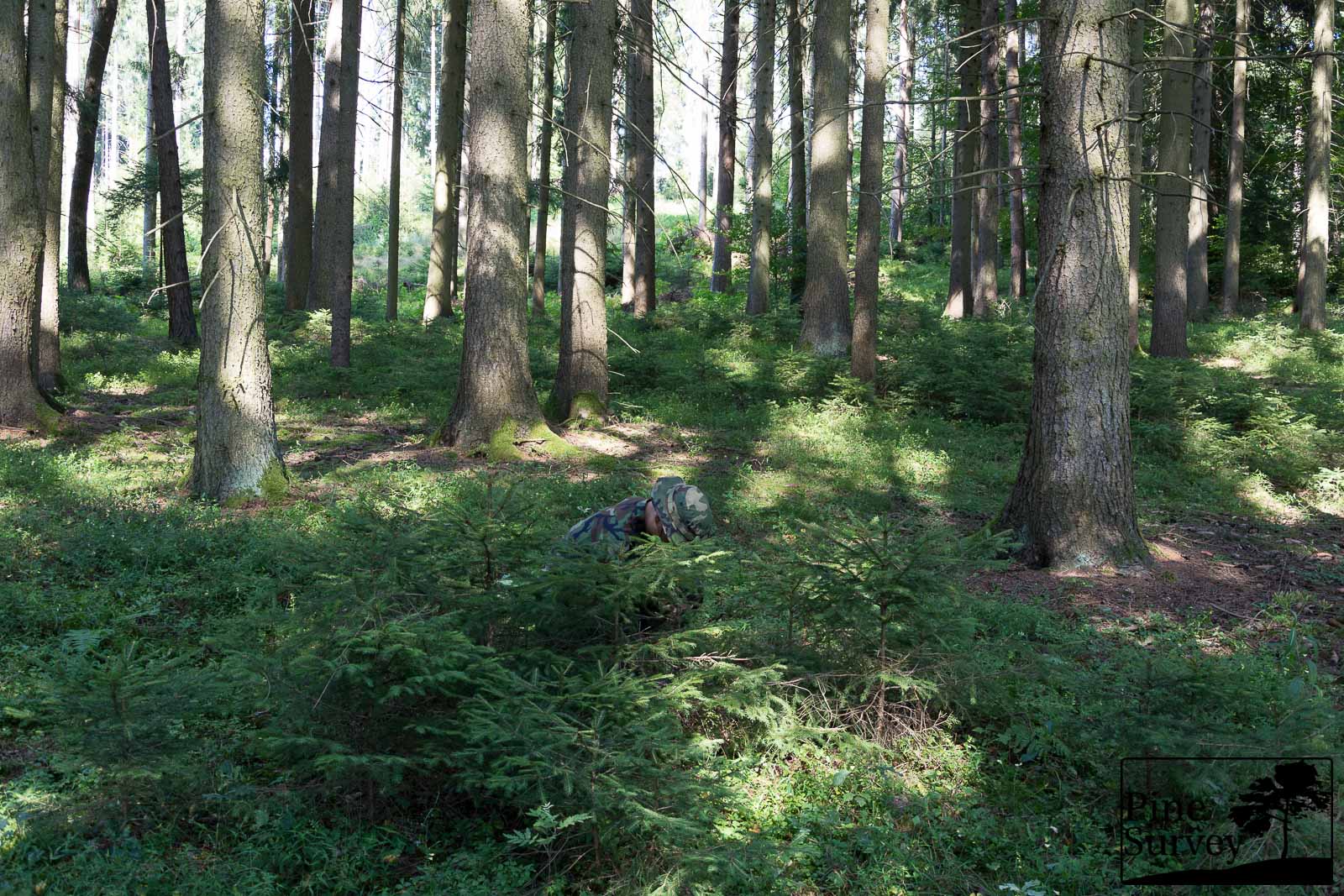
M81 Woodland, kneeling with 35mm zoom
PL Woodland is not as good matched with the colors, but the midi elements and the muted color tone blur out the silhouette nevertheless.
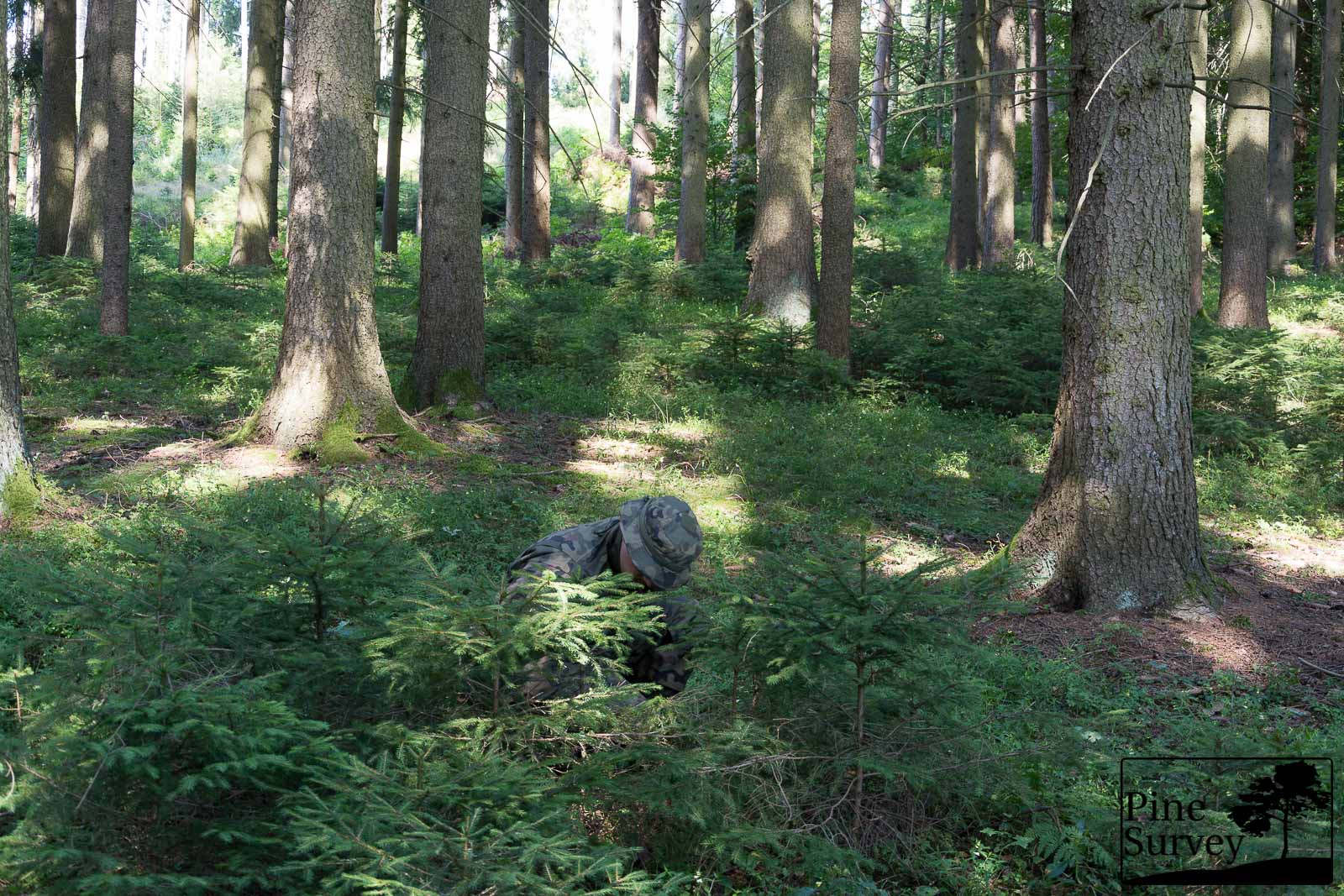
PL Woodland, kneeling with 35mm zoom
Position 3 – the prone position
Wide angle shot
As always the prone position is the most effective position when it comes to camouflage patterns – for obvious reasons.
M81 Woodland breaks up completely together with the ground floor from the distance. It would match the surroundings even better if it wasn’t for the black elements, but this is nagging on an absurd level, considering the close proximity.
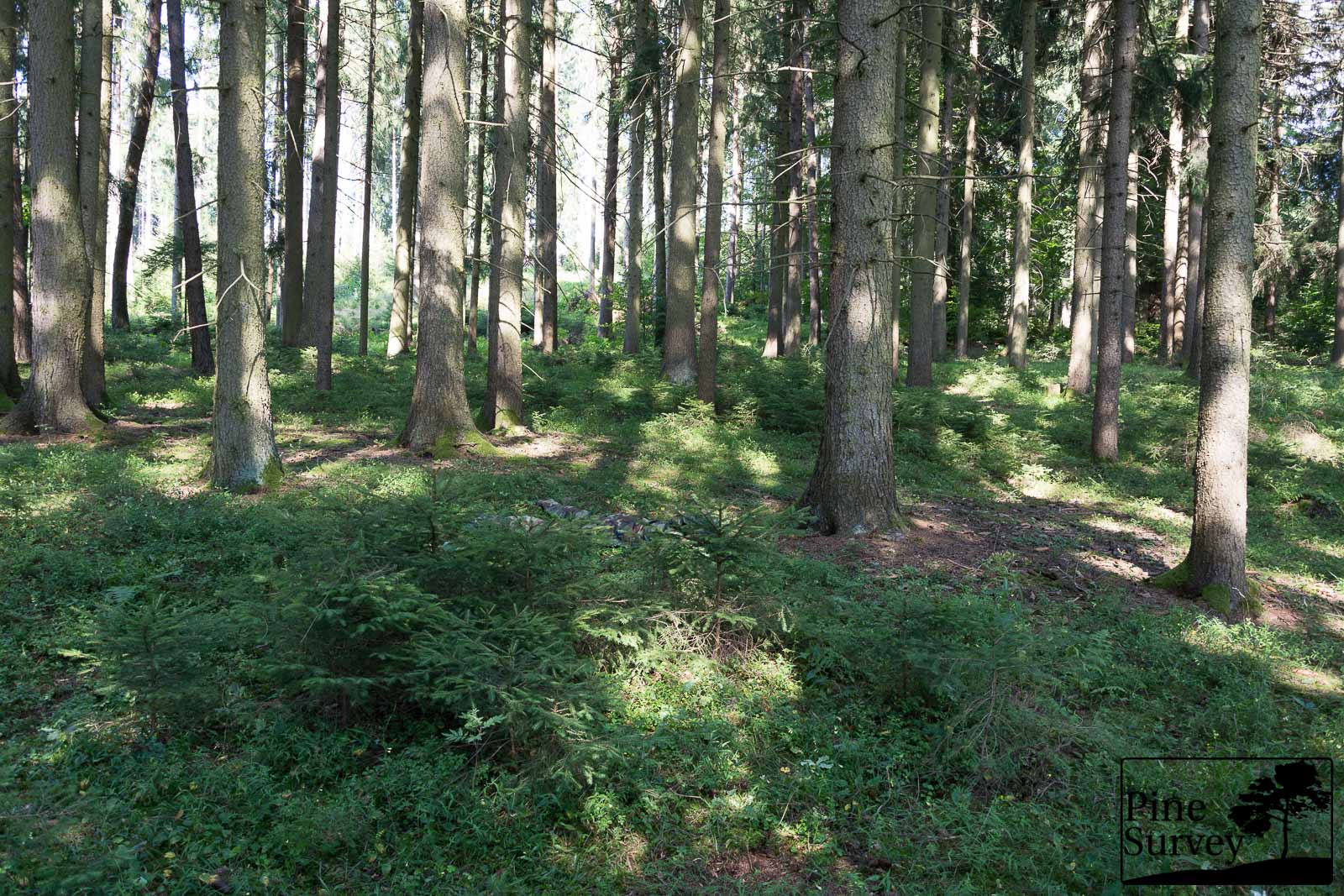
M81 Woodland in the prone position – wide angle
PL Woodland does not vanish as well as M81 (also my shoes stand out in this picture), but it still appears to be natural in the surroundings.
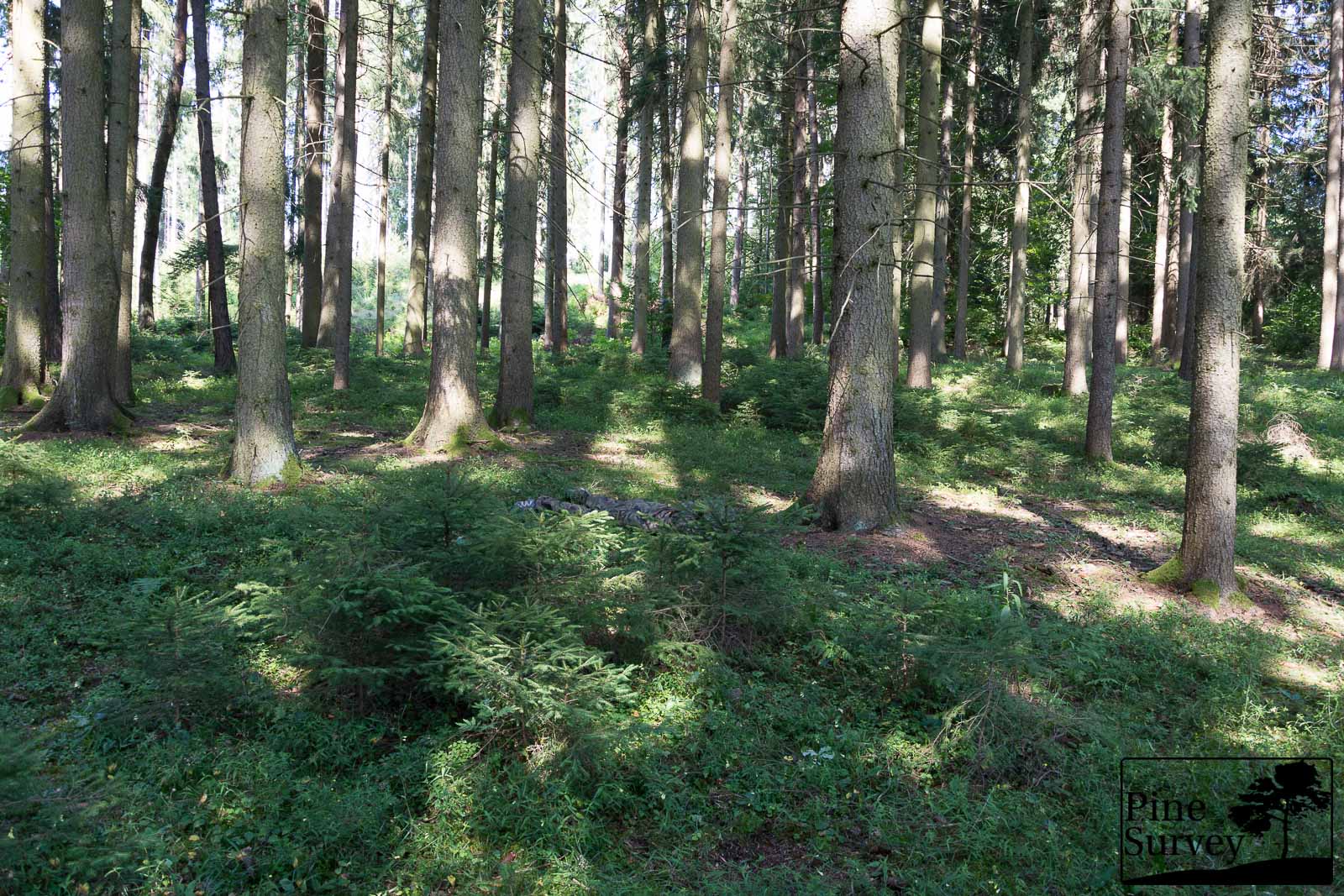
PL Woodland in the prone position – wide angle
While you could mistake M81 for the ground floor, you could perceive PL Woodland for a tree trunk on the floor.
Zoomed in shot – actual distance of 10m
Zooming in on the 35mm focal length, you will get my point regarding the black elements of M81. While still doing a great job with the matching colors, the M81 pattern with its macro elements is visible as soon as you have identified it. Patterns with midi and micro elements are more favorable in such a situation.
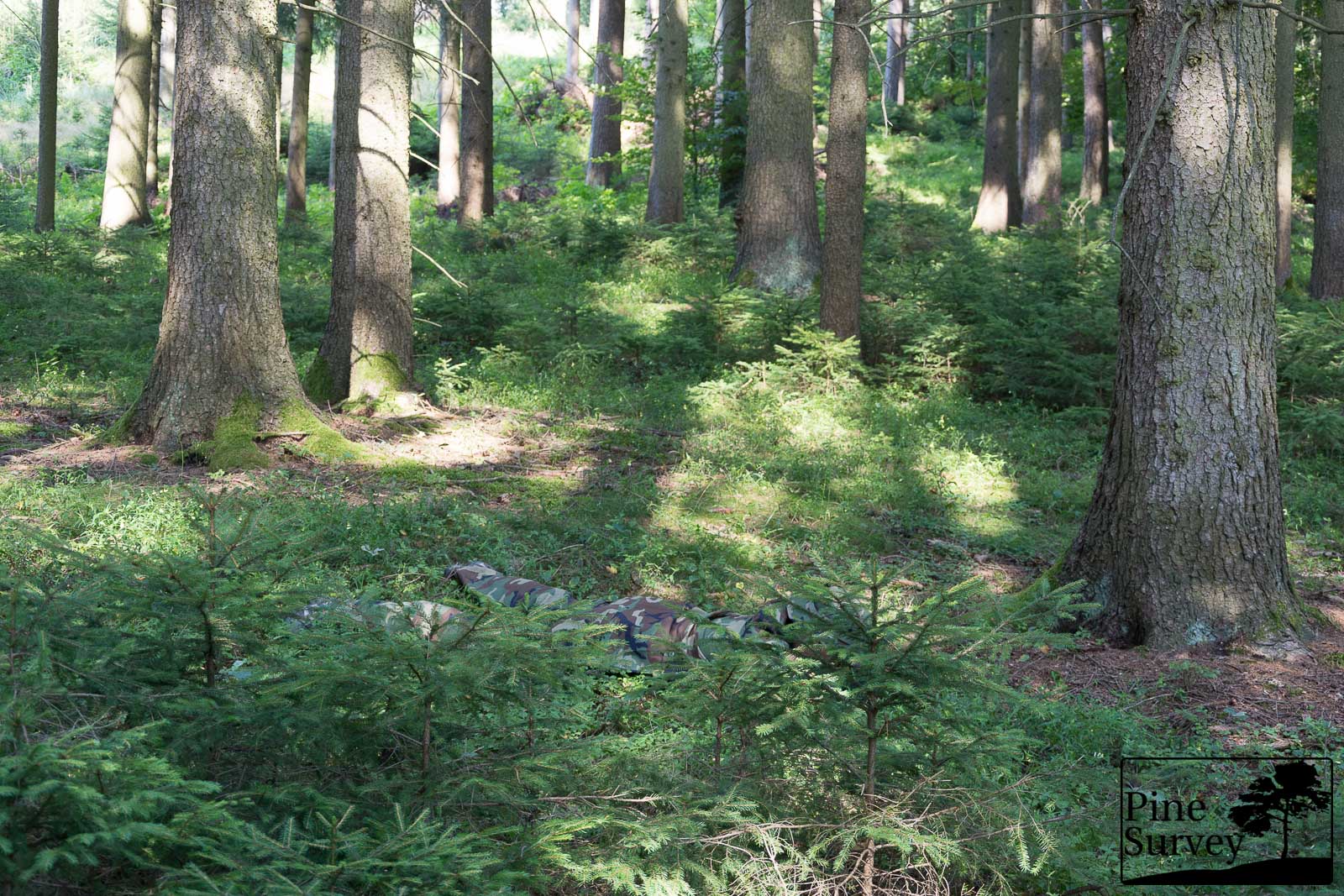
M81 Woodland in the prone position at 35mm zoom
The same goes for PL Woodland. At such close proximity, which is considered close quarters, the pattern is easily identifiable. Although the midi elements are slightly more natural in this situation, the colors are a little bit off although they are more muted.
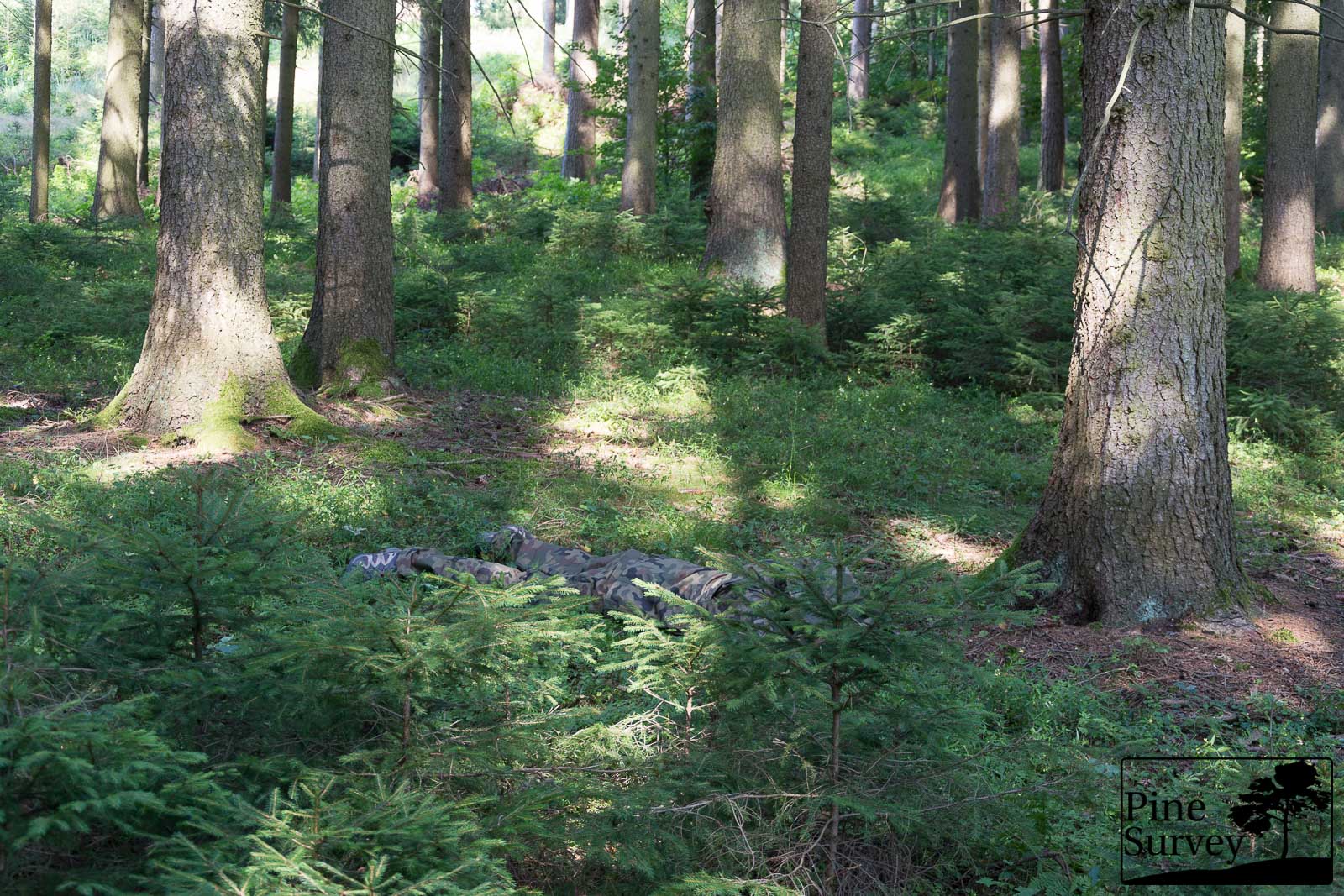
PL Woodland in the prone position at 35mm zoom
Conclusion
With this field test I wanted to present you a comparison of two “oldschool” camouflage patterns that can be considered military veterans. Being designed for temperate woodland environments, both patterns are quite effective and one might wonder why M81 Woodland was disbanded by the regular US military forces in the first place (it is still being used by certain branches of the US military though), while it is still being used by other forces worldwide. Of course there are good (and not so good) reasons for this, like the changing operational theaters, and technological progress – but also bureaucratic decisions etc.
It will be interesting to see, if PL Woodland will face a similar outcome. There are always talks of changing the pattern to a digitized version, while at the same time Poland has adopted the Suez pattern, a Multicam derivative, for its Special Forces. Nevertheless PL Woodland – or better said WZ93 – can still be seen in use by regular forces.
Hopefully it was interesting for you to see a comparison between these two camouflage patterns. There is still another comparison to come with other temperate woodland patterns – namely PenCott Greenzone and Kryptek Mandrake.
At this point I want to show my gratitude to Helikon Tex who provided me with the means to give you this comparison. The uniforms in this review are Helikon-Tex’s BDU and CPU uniforms.
Thank you for reading!
Until next time!

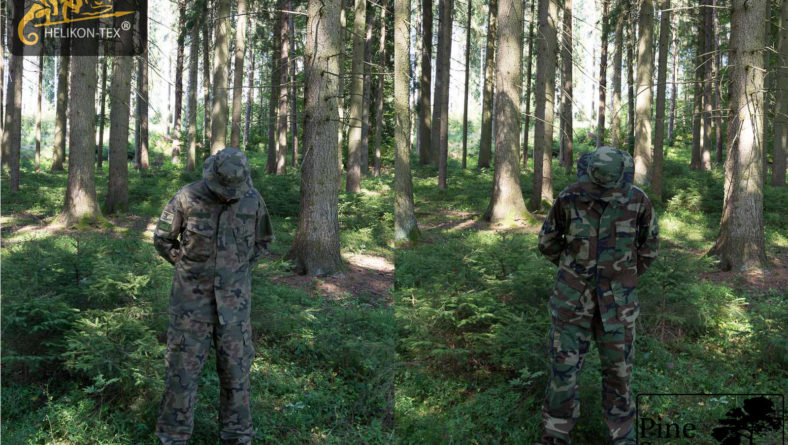
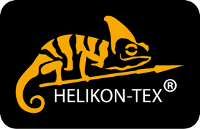
No Comment
You can post first response comment.